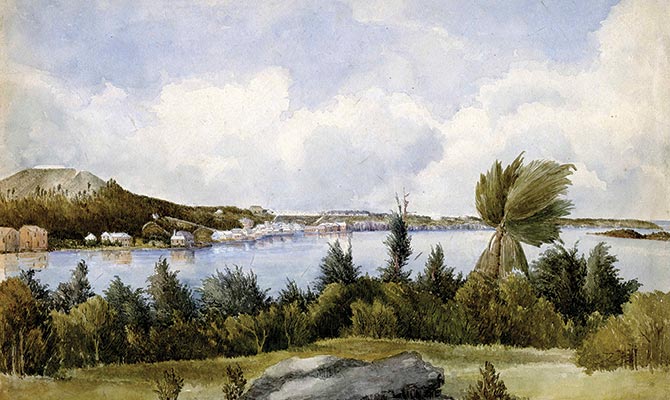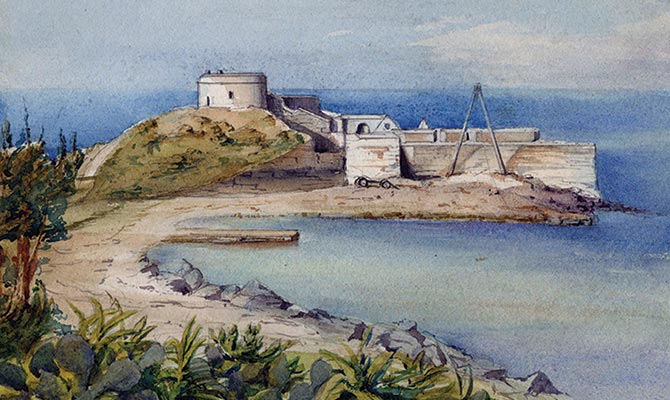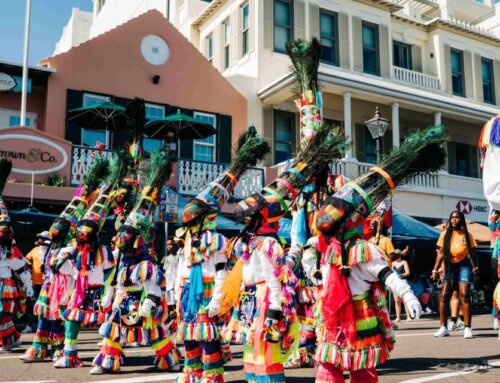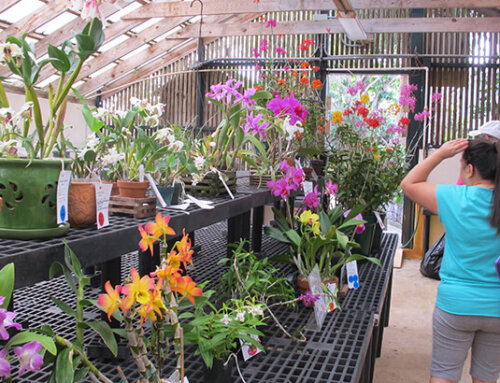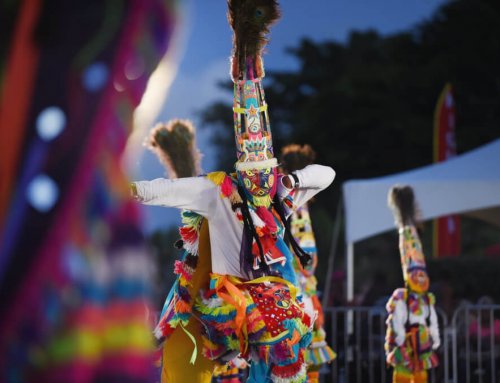By Dr. Edward Cecil Harris, MBE, JP, PHD, FSA
In the wonderful Fay and Geoffrey Elliott Collection of nineteenth-century paintings and photographs at the Bermuda Archives are a number of works for which the artist is presently unknown. Here we present four such miscellanea from different areas of Bermuda.
The first image relates to the great Commissioner’s House, erected as the first cast-iron prefabricated home in the world, and now the centerpiece of the National Museum of Bermuda, with three floors and some 15,000 square feet of exhibit space. The House sits on the eastern hill of the old Royal Naval Dockyard, an area that was not quarried away to some six feet above mean high tide to provide the flat ground for the British naval base. The high ramparts shown below the Commissioner’s House were built to hold the Dockyard against an attack by the newly named “Americans”.
Moving eastward, likely into the vicinity of “Tom Moore’s Jungle”, an unknown artist captured the opening to a limestone cavern recorded as “Tucker’s Cave”. The rock and geological formations in that area of Tom Moore’s Tavern are some of the oldest strata in Bermuda and in many instances the caves, with their stalactites, stalagmites and flowstones are some of the most beautiful sights on the Island.
Further to the easternmost point of Bermuda lies one of the island’s most important fortifications, which guarded the Narrows Channel, being the only ships’ channel through the reefs into the inner harbours of Bermuda, such as Murray’s Anchorage, Grassy Bay, the Great Sound and that for the City of Hamilton. There were seven periods of fortification at Fort St Catherine and the painting from the Elliott Collection, presumably by an army officer, depicts the last remodeling of the site in the 1870s. At that time, artillery was undergoing a major change from that which fired round cannonballs to guns that launched ‘shells’ in projectile form, thereby giving a bigger bang for the caliber (diameter length) of the weapon. The watercolour shows the Fort much as it is today, as it was not rearmed in the early 1900s; it is now a part of Bermuda’s UNESCO-designated “World Heritage Site”.
The last painting presented here is a wonderful vignette of St. George’s from the area known as Stoke’s Point on the southwestern perimeter of the harbour for the town. Probably painted in the 1860s, the glacis, or cleared field of fire, for Fort George to the west of the town is predominant. The Town looks very tranquil, as it is nestled into a part of the southern side of St. George’s Island, a view that to a degree remains the same today.
This miscellanea represents some of the wonderful views of Bermuda that exist in the artwork in the Fay and Geoffrey Elliott Collection and other collections throughout the Island: as far as we are concerned, it is significant heritage reflecting the world that Bermuda once physically was, and which fortunately to a degree remains so today, major assets for cultural tourism.


